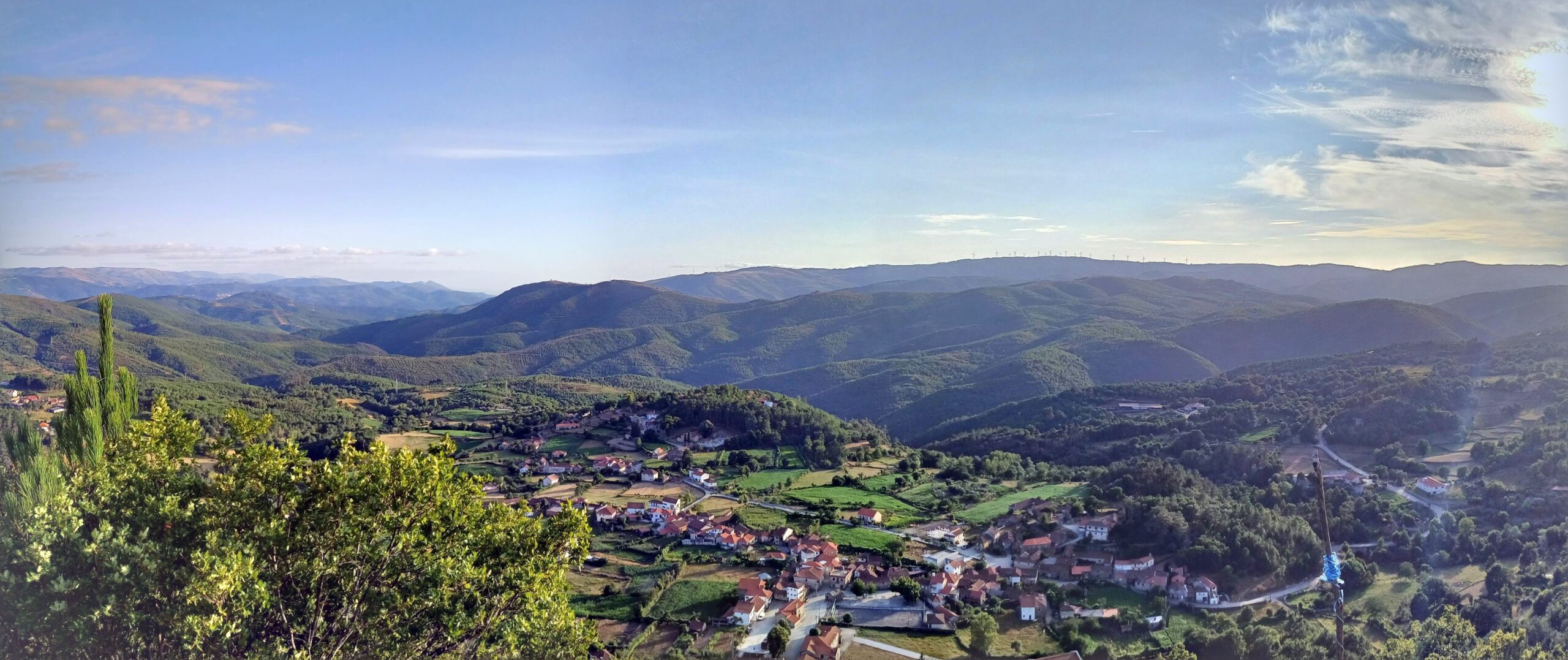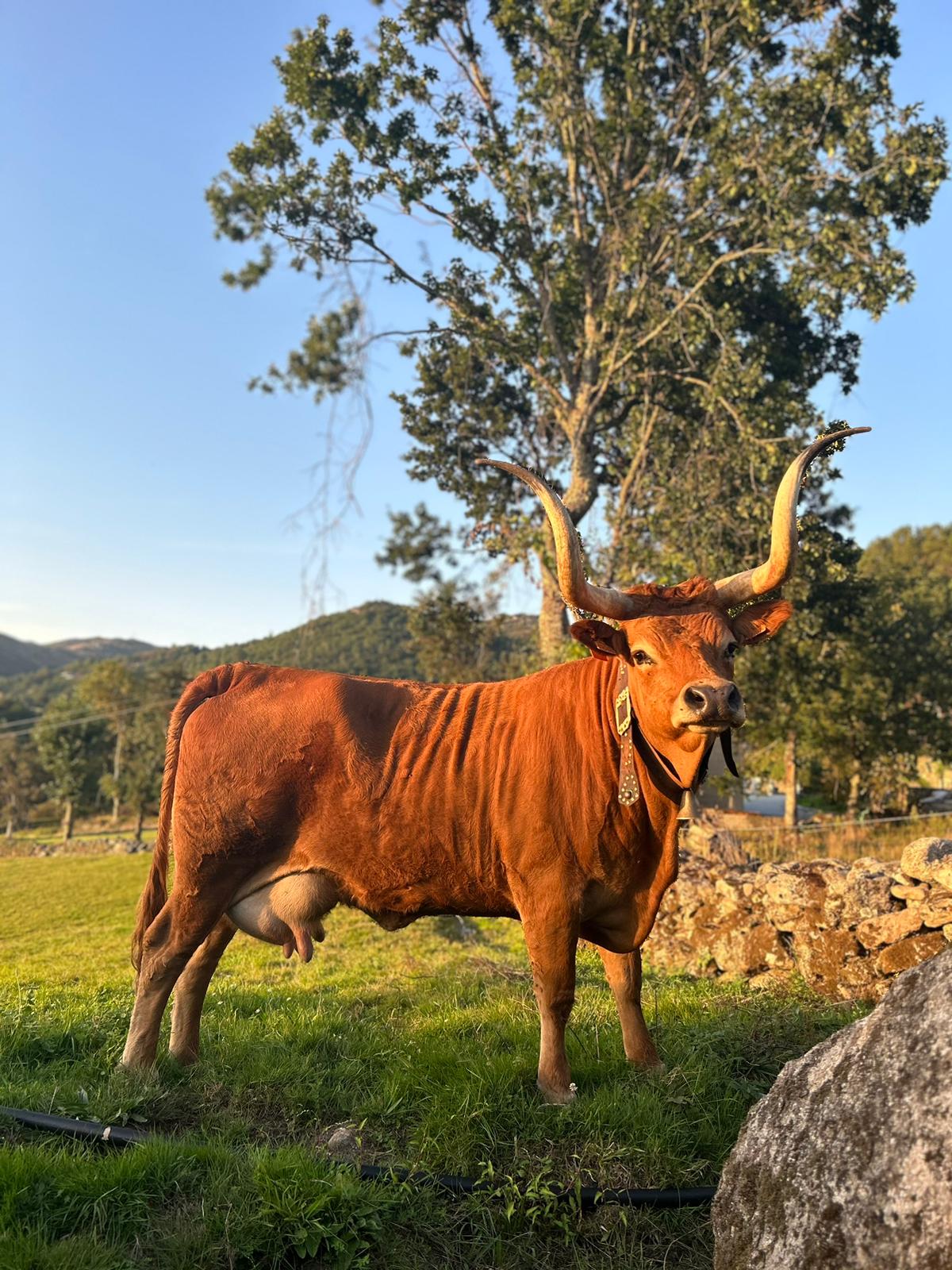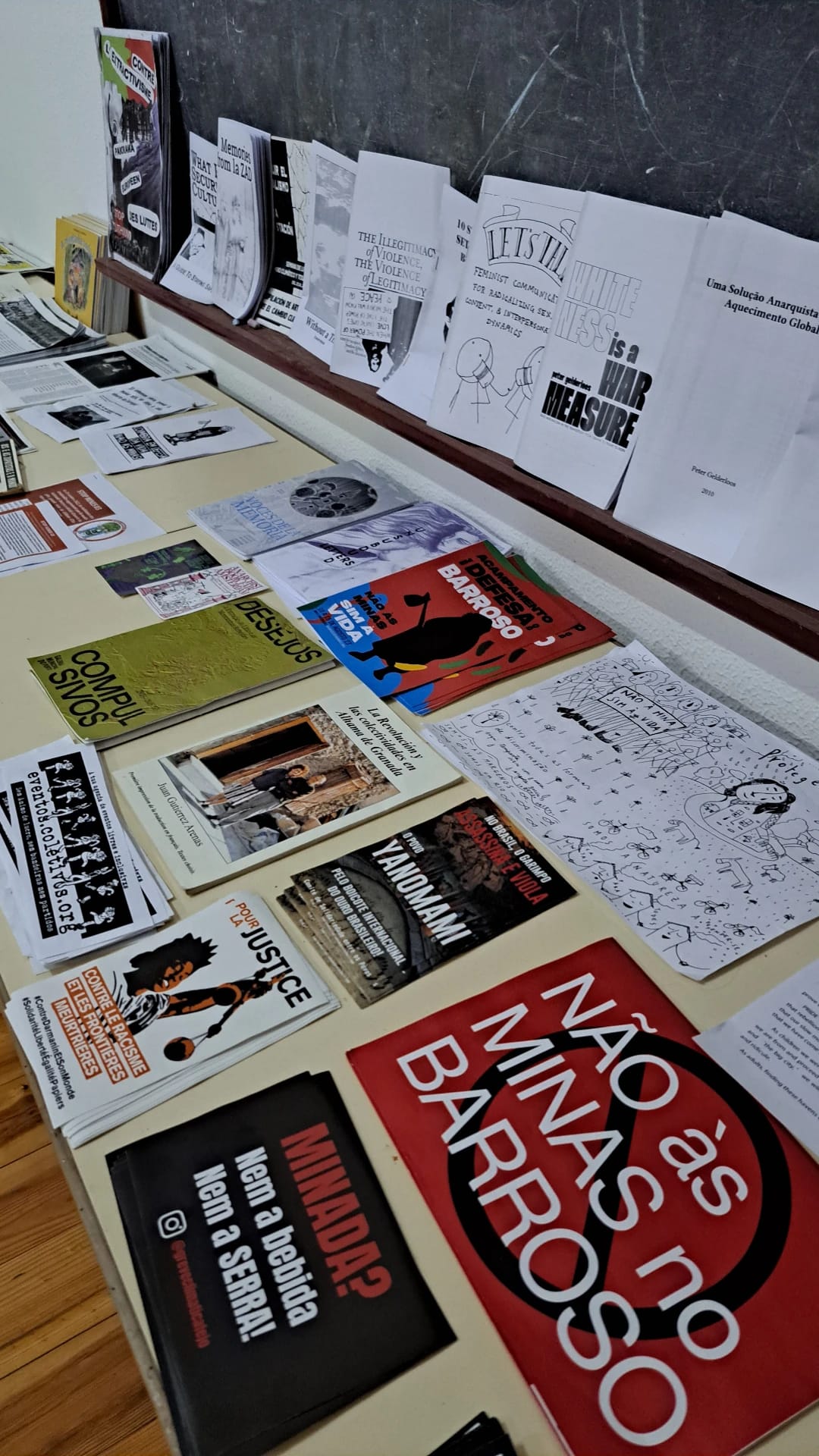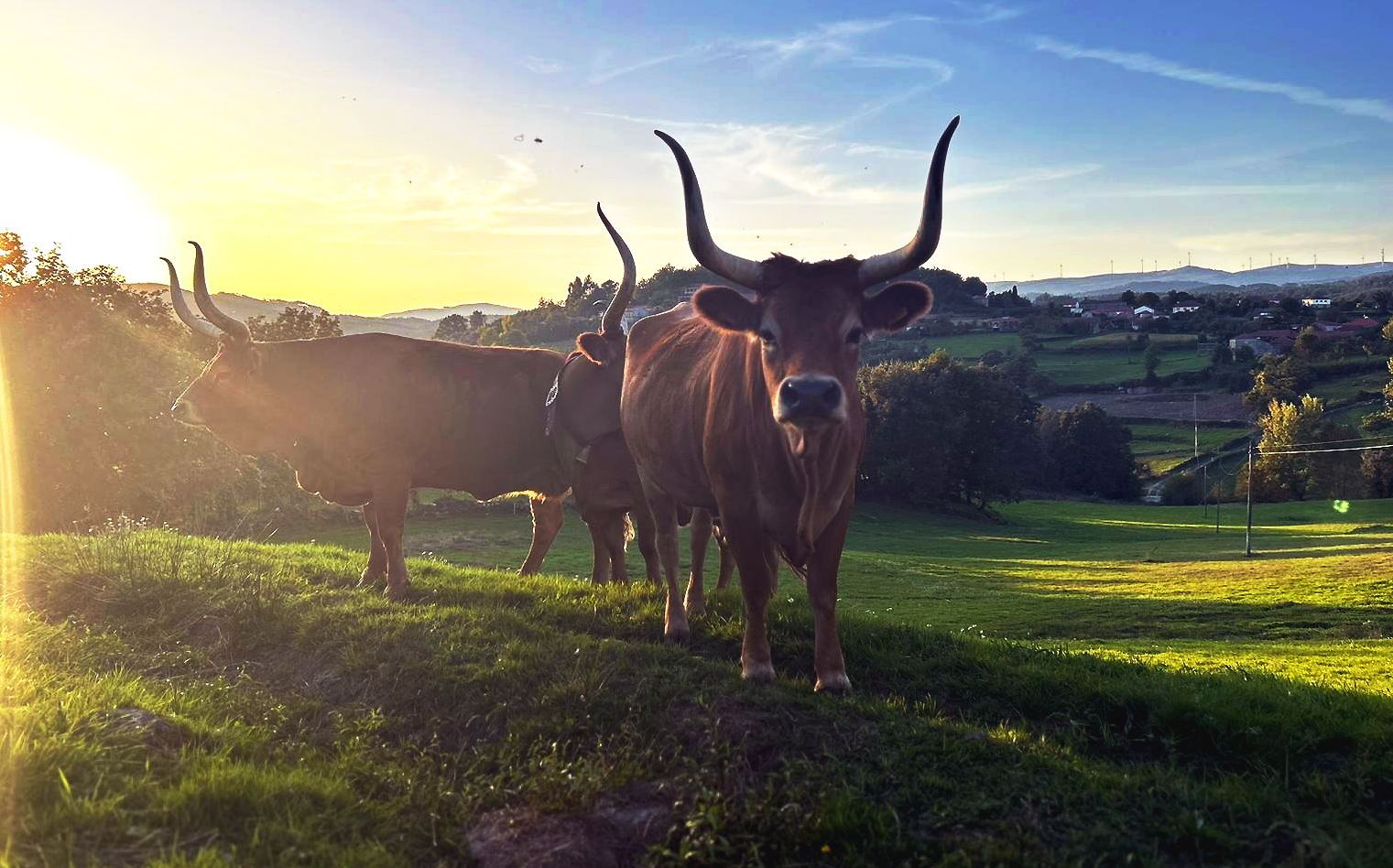New Tales from the Barroso Mountains
Usurpations, Intimidations and Resistances
Authors: Mariana Riquito & João da Montanha
___
The sunlight bids farewell to the mountains. The clouds hang in a sky tinged with pink and purple. The birds fly in flocks, returning to their trees. We, too, are returning home after another afternoon spent in the communal lands in the mountains. Since mid-November, these lands have been under almost permanent vigilance by the local population, after Savannah Resources’ attempt to move ahead with its mining prospecting works. Savannah Resources is the owner of the “Mina do Barroso” lithium exploitation contract since 2016. On 31st May 2023, Savannah obtained a favourable conditional Environmental Impact Statement (EIS). Since then, the company has shown a more aggressive attitude and a more assiduous presence in the Barroso mountains.
presentation
The re-entry(s) on stage
With a conditional EIS in hand, the company now has a year to present the Environmental Compliance Report for the Execution Project (RECAPE), a document drawn up by the company itself, in which it must demonstrate compliance with the conditions imposed by the EIS. At the beginning of October, the machines started working every day, including weekends, within the Mina do Barroso concession area. At the same time, a police (GNR) patrol was deployed to permanently monitor Covas do Barroso, now considered “a conflict zone”. At the same time, a team of social psychologists from the Community Insights Group, hired by Savannah to carry out a Social Impact Assessment Study, entered the stage.
Thus, to the machines that continually open wounds in the bowels of the earth are now added the policing structures of a State that is in collusion with the attempt at socio-ecological destruction, as well as corporate social engineering mechanisms. Accelerating this gradual process of profound transformation of the territory, in the first days of the great re-entry, workers subcontracted by Savannah Resources were informed by the local population that they were cutting down trees in an area that did not belong to the company. Ignoring the legal situation and the locals’ warnings, a few weeks later, the company moved in with a machine to that land.
With this scenario in place, various actors will come on stage and, in the course of different acts, make up what we call the New Tales from the Barroso Mountains. New because they represent a new chapter in the lives of these people, who for more than five years have arduously resisted the mining expansion plans for this region. Tales that aren’t really tales, because they tell a real story. Barroso Mountains because they are the true protagonists of these stories. New Tales from the Barroso Mountains because we wanted, without any pretensions of literary similarity, to remember the legacy of the Trás-os-Montes poet and writer Miguel Torga and the beauty of his writings about the Earth.
ACT I
Scene I. The Fall
It was late in the morning and, despite the cold, the autumn sun was shining and illuminating the oak groves where we quietly filled our baskets with wild mushrooms. However, we couldn’t ignore the incessant ringing of the telephone, which forced us to interrupt our morning walk and momentarily removed us from the life of the woods. On the screen, a stream of euphoric messages announced that a corruption scandal had erupted and shaken the government: the investigative police (PSP) had searched the Prime Minister’s office that morning as part of a process that sought to unravel the alleged web of deals linking lithium and hydrogen to a data centre.
“Obviously, I have tendered my resignation,” declared PM António Costa, a few hours after the so-called Operation Influencer broke out. The fall of the government was greeted in Covas do Barroso with great excitement: “Have you seen it? A village as small as ours brought down the government!“. The following day, a press conference was held at the Casa do Povo (People’s House), where dozens of people gathered in an enthusiastic atmosphere. On television, the people said that what had happened confirmed what they had long criticised about these projects – the collusion between State and private interests, the lack of transparency in the conduct of these processes, and the repeated disregard for the voices and wishes of the people. Anti-mining associations and movements also took advantage of this momentum to demand the immediate cancellation of all lithium mining projects in Portugal.
However, as the people also reminded us, it is important not to be held hostage by media spectacles, because the serious socio-ecological problem that these mines represent is the main reason for opposing these projects. The defence of life, the protection of a healthy ecosystem and the preservation of human cultures in harmony with their surroundings are the main thrusts of this fight, which has been countering the hegemonic narrative of the energy transition and decarbonisation. Alongside the energy transition, the European Union (EU) has also been developing its “digital transition”. The two twin transitions – energetic and digital – are closely linked, so it’s not surprising that they come together in the Operation Influencer scandal. The energy transition is itself a digital transition, and vice versa: the EU and the governments of its member states are planning to create a “digitalised European energy market” on the one hand, and all the digitalisation of the economy and society requires a massive amount of energy production and consumption on the other. However, both decarbonisation and digitalisation are centralised policies that do not take into account local realities and desires, they are extractive policies that require the continuous expansion of mineral resources and the destruction of ecosystems, and they are reductionist policies because they are justified by reductionist analyses of ecological problems and social needs. The idea of a decarbonised and digitalised society is fuelled by the myth of technological progress, the dogma of infinite economic growth and the belief in human superiority to control non-human nature. These myths have left us devoid of the ability to feel the damage we cause: as if our senses no longer tell us anything, we have collectively allowed ourselves to be bewitched by screens, dominated by machines and ignored the wounds we are creating in the body of the Earth.
Scene II. The Machine
We had just finished lunch when we heard someone knocking on the door. We opened it and heard a firm voice on the other side:
– “The machine has moved.”
The moment had finally arrived: the people’s warnings had indeed been ignored, and the company had moved in with a machine on a piece of land that the locals claim to be communal land. We put on our coats, poured our coffee in a jar and climbed into a neighbour’s pick-up truck. When we arrived at the hill, it was already populated with dozens of locals who quickly stopped the machine from continuing to work. It had already cut down several trees and levelled the ground, making way for what would be a “prospecting platform”.
– “They think they can do anything with these machines, don’t they?“
– “Who thinks they can do anything?”
– “The machine, the engineer, the company.”
With just one machine, and in a very short span of time, years of complex interactions in an ecosystem can be destroyed: an incredible amount of vegetation that has taken years to grow and flourish disappears, kilometres of fungal mycelium networks can be destroyed, and the soil trampled and pressed by the machine’s caterpillars can become severely compacted. The machine used in this way is both a tool and a symbol of human omnipotence and arrogance over nature. The machine, with its caterpillars that crush everything, is a symbol of this desire to control and decimate everything in the name of progress, which is now painted green.
Aside
– “But wait a minute! I don’t understand: the government falls because of lithium, but the pressure on the ground increases. Can anyone explain this?“
– “Wait, wait, the story hasn’t even started yet…!“
Scene III. The Lookout
The day the machine moved – 16 November 2023 – marked the beginning of a process of quasi-permanent vigilance of the territory: since then, locals have organised themselves in shifts, ensuring that there are always people in the morning and afternoon, every day, not allowing the company’s machine to work.
The piece of land that is being defended daily is an area that is already in court: the litigation process is aimed at deciding who owns the property – the community or the company. The company claims it owns the land because it bought it from a private owner. The locals and the Directive Council of the Baldios (communal lands), however, argue that, although the company has bought some properties from private individuals, it has misused the BUPi. “BUPi” stands for “Balcão Único do Prédio” and is a recent digital tool aimed at owners of rustic and mixed properties, where they can map their properties in a simplified way. Simplified because the properties can be geo-referenced by the interested parties online. In the case of Covas do Barroso, the company has been buying land from private owners and then they increase the property’s area online: 3 hectares become 6 in one click, and so on. Finally, there’s the last trick: instead of using the area marked on the land certificate/registry, the company claims to have the right to use the area marked on the BUPi for the purpose of carrying out the prospecting works.
– “You have to understand: we’re just following our work plan,” says one of the geologists in charge, calmly.
– “Very well, and we’re following our defence plan!” replies a local without blinking.
The defence of this small plot of land has thus become a symbol of the people’s struggle. This defence plan has enjoyed the support of many other people who are in solidarity with the territory of Barroso: in the very first days, a solidarity call was made, appealing for people to come to Covas, which was enthusiastically received; there was also an anti-mining caravan, which passed through the different villages of Barroso threatened by mining, culminating in Covas, bringing together about 200 vehicles and hundreds of people. The strong solidarity between all the mountains and beyond has helped to consolidate the lookout process, showing, once again, that the locals are neither alone or isolated, as the company and the State want to portray them.
Scene Indication
The lockout has turned into a routine: every day at 7.30 in the morning, someone climbs up to the hill; the machine driver arrives in the meantime and the engineer calls the police; the people multiply; when the police arrive, they register the incident; after the lunch break, the scene repeats itself, until, at the end of the working day, we all return home. In fact, an almost theatrical movement has been created in the act of defending these mountains.
ACT II
Scene I. The Patrol
– “We now have a GNR patrol stationed 24 hours a day in Covas. Orders from above.”
In the first week of October, the news broke that a GNR patrol had been deployed to Covas do Barroso. Since then, not a day has gone by without the GNR jeeps being spotted by some villagers. Locally, these orders were received and interpreted as an offence: “A patrol assigned to us?! So we’re the criminals now?!“. In a historically isolated village, where less than 200 people live, the vast majority of whom are over 60 years old, the permanent presence of the GNR is indeed insulting.
The GNR’s initial presence – although assiduous and constant – bore no resemblance to the attitude they adopted once the “lookout” scene in New Tales from the Barroso Mountains began. Faced with the people’s persistence in defending that symbolic plot of land, the GNR began to prove themselves equally persistent and more aggressive. In the early days of the watchdog, the harassment was constant: any justification was used to fine, threaten or intimidate those who travelled to defend the mountains. One elderly person had his car searched almost at dusk; others were fined for not wearing seatbelts on dirt roads; they asked for papers of dogs that were roaming freely on the hills. The police intimidation strategy was clear. After a few days, when the vigilance and lookout became routine, the aggression disappeared momentarily. What didn’t disappear was the steadfastness of the population, who at no time gave in to these intimidating threats or gave up the defence of their territory.
Scene II. The Company
The company is Savannah Resources, which by now almost everyone has heard of. It’s a mining company with no mining experience, based in London, the capital of the “old” British Empire.
The company has two “information” centres, one in Boticas and the other in Covas do Barroso. Rumour has it not even flies come in.
There’s no doubt that the company, or at least some people in the company, had good intentions: to mine and extract to help with the energy transition, to move the industrial and technological complex towards so-called green energies, and to profit from it.
– “They did, but they don’t anymore?”
Perhaps some of the company’s employees still have the illusion that they are designing something with a positive impact, but after many years of being told by different people and organisations about the damage and destruction that their project entails, and after years of ignoring the clear, continuous and forceful expressions of rejection coming from the populations directly affected by the project, it becomes clear that only at a huge cost to personal integrity and structural integrity can these illusions be maintained. Cultivating a certain talent for not wanting to see, not wanting to hear, not wanting to know. The cultivation of wilful negligence.
– “Not wanting to see? What about the surveillance cameras in the ‘information’ centre?! The only cameras in the village?”
Savannah changes its management bodies like a change of clothes: it’s incessantly looking for the best manipulation technique to convince the population. Savannah doesn’t seem to have read the manuals properly. It either offers a cake or makes a threat; or is that in the manuals?
In 2022, before its latest changes in marketing and management, in its “information” magazine – or propaganda magazine, depending on your perspective – called “Lítio do Barroso”, the company gave us an article entitled “Portugal – United Kingdom: a 650-year-old alliance”. In this informative piece, the company characterises the political and economic relations between Portugal and the United Kingdom as “policies of friendship”, stating that the mining project it intends to develop in Portugal is “based on a set of values that have been built up over several centuries” and “will be a tangible manifestation of the depth of this relationship” and will bring “benefits to the people of Portugal and the United Kingdom”. In other words: the project will reproduce relations of dependence and subalternity and will bring benefits to the major powers, leaving the peripheral country sacrificed and plundered, now in the name of a so-called ‘green’ transition. This is just one of the examples of desperate attempts to win people over by means of far-fetched, almost pathetic, propaganda.
Savannah changes its communication strategy: if the cheesy advertising doesn’t work, it switches to technically unreadable advertising. Someone will be impressed.
Savannah has high-ranking officials declaring directly to the people that nothing will be done against their wishes, just as it has other high-ranking officials declaring that they will not think twice about expropriating their lands to carry out the mining project. Geologists are talking about environmental problems and admit that they know nothing about forests. Savannah also has spontaneity, Savannah likes contradiction.
Savannah is devout, it talks to the priest. Is it to go to confession? [Yes, you read that right: Savannah uses strategies from the Middle Ages to win the hearts and minds of people who have categorically rejected the project for six years. It has gone to meet with priests in the region, asking them to pray in favour of its project during masses].
Savannah will no longer directly use water from the river. Savannah will now collect rainwater; if it doesn’t rain, will Savannah make it rain?
Savannah sulks when its attempts to usurp are called… attempts to usurp!
Savannah tries to overthrow local leaders and representatives. Everything goes in trying to take down these targets – from blackmail and manipulation to threats and intimidation.
Savannah wants to be accepted: it smiles in order to be liked, but gets angry because it isn’t, and threatens anyone who doesn’t bend.
Savannah wants to present an image that doesn’t match its interaction with the real world: online, it portrays itself as a company with great neighbourly relations. Online, Savannah doesn’t sulk, threaten or contradict itself; online, Savannah smiles.
Savannah and its employees are products and agents in a megastructure that moves to feed and reproduce its Myths of economic growth, development, technological progress and separation. Savannah is neither inherently good nor bad, Savannah is just one of the faces of an ontology that destroys and convinces fewer and fewer people. Savannah can thus be one more starting point for creating other myths, other perspectives, and other ontologies.
Aside: The “Sueca”
– “Miss Engineer is shuffled… I shuffle, the driver deals the cards and you start. One more round and we win!”
“Dedication. Fernando Queiroga” reads the fat orange letters on the cards that are quickly dealt under a low plastic table by a fire lit in an improvised barrel. And so begins another match of the traditional Portuguese card game of Sueca on the mountains. Sueca, that great national sport, has become part of the routine of those who climb there every day. On rainy days, it’s played under a tent. On sunny days, people play wherever they can: on a camping table, on the ground, on the caterpillars of the machine.
ACT III
Scene I. The Company and the patrol intensify
– “Orders from above.”
We heard this phrase over and over again. It’s the famous maxim: obey authority. “I’m really just following orders, you know?“. Covas do Barroso could be the new stage for the Milgram Experiment: how willing are people to obey orders from above, even if they seem ridiculous?
From mid-December onwards, the siege began to tighten: the company extended its area of operations, now moving several machines simultaneously in different parts of the mountains; the police apparatus began to orchestrate ‘divide and conquer’ manoeuvres, trying to separate the “locals” from the “non-locals”; the company’s managers began to have an increasingly assiduous presence in the region, trying to meet with influential local people.
Scene II. The mountain defends and reinvents itself
– “We need the communal lands because we live off agriculture. It’s an essential good for those who are poor in mountainous areas. And you can’t have communal land and a mine at the same time,” says one local categorically.
The vast majority of the mining project would be located on communal land (baldios). Baldios are therefore one of the main heritages to be defended. In addition to the symbolic land that has been defended since mid-November, several other communal lands are under litigation. However, these disputes can take years to be solved. That’s why the company has been trying to move forward, claiming that if the court rules in favour of the locals, it will pay them compensation afterwards and restore the destroyed landscape. However, the locals strongly object to the way in which the company categorises the territory in a quantifiable and replaceable way, turning living organisms into inert numbers. For the people, it doesn’t make sense to assign an economic value to the communal lands or to talk about replacing trees: the communal lands represent a wealth and heritage that goes far beyond its monetary quantification, and the trees, once cut down, cannot simply be “replaced” with new ones:
– “How can this be replaced? This will never be the same again!” one local shouts.
It has become increasingly visible how the Barroso territory is made, unmade and remade by multiple actors who conceptualise and experience it in radically different ways. For the people, “wealth” means preserving their forest, from which they gather brush for animal bedding and firewood to keep warm in the long cold winter months. For the company and its machinery, a symbol of human domination over nature, wealth means extracting this “new white gold” from the bowels of the earth.
– “Every day without working is a loss,” says the geologist
– “And the destruction to the land and the culture that you’re doing, isn’t that loss?” asks a local.
– “But what land has been lost here?” he retorts dismissively
– “The pine forest, which is wealth!” replies another local.
– “What gives oxygen?” points out another local.
– “I want to see what potatoes you’re going to eat from this land!” adds the first.
These mountains, sacred and precious to many, are defended and loved. Experimental and creative projects are being imagined for them, such as agroforestry, regenerative agriculture, environmental education, artistic residencies. They create bridges, weave bonds and open doors to outsiders.
When we allow ourselves to be truly present in the mountains, with all our senses immersed in it, listening to its sounds and its silences, seeing its colours, its shapes, its species; when we allow ourselves to feel its soil; when we quench our thirst in its waters or eat its fruits; when we feel the heat of its wood or the breeze of its breath on our skin; when it makes us feel fear or joy; we realise once again that the mountain is alive, that the mountain is part of us and we are part of the mountain.
“…to be reborn at the foot of every sapling, to run alongside every stream, to fly alongside every bird.”
Miguel Torga, The Creation of the World (1937)
When we love the mountain, we will never let it be destroyed.
________________________
Notes
-
In Covas do Barroso, there are approximately 2.000 hectares of communal land, known as “baldios”. “Baldios” are a type of collective property of specifically communal nature — they’re neither pubic nor private —, whose administration is the sole responsibility of the “compartes” (Law n.º 75/2017 of 17th August). The compartes are all the citizens residing in the area where the corresponding baldios are located. They communally manage and make decisions over the common land in the Compartes’ Assembly.
-
The “Mina do Barroso” exploration contract was signed between the State and SAIBRAIS in 2006 and covers an area of 120 hectares for quartz and feldspar exploration. In 2016, the State signed an addendum to this contract, extending the exploration area to 548 hectares and adding the mineral lithium. That same year, Savannah Resources bought this contract, which at the time was already in the hands of IMERYS. In 2021, Savannah Resources presented an Environmental Impact Assessment (EIA) for the Expansion of the Barroso Mine, which envisaged extending the concession area to 593 hectares. After several reformulations, Savannah’s EIA received a favorable conditional Environmental Impact Statement (EIS) in May 2023. This is to say that, when we talk about the Mina do Barroso concession area, we are referring to the first and only contract with an actual operating licence. For this purpose, the company has leased 16 hectares from the Covas do Barroso Communal Lands Council.
-
Miguel Torga has written the “Novos Contos da Montanha” in 1944. The original Portuguese title of the article is “Novos Contos das Montanhas Barrosãs”.
-
Fernando Queiroga is the Mayor of the Boticas Municipality, where Covas do Barroso is located.




